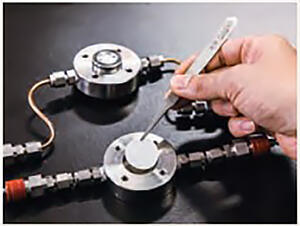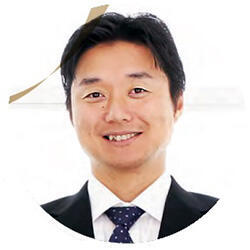Adapted from an interview with researcher Yu Hoshino
Q1. Why did you aspire to be a researcher?
A1. An interest in science and life since childhood.
There were a lot of mountains and streams near my house when I was a child, so I always caught bugs and crabs while playing. I wanted to become a researcher in the future, partly because my father was a life science researcher.
Currently, I am researching how to make high-performance substances such as proteins from plastic, which are inexpensive synthetic molecules. By the time I entered college, genetics and biotechnology had become tools that anyone could use, making it possible to easily design and obtain proteins. However, proteins are very expensive, as well as difficult to handle. If materials with the same functions can be chemically synthesized and produced cheaply in large quantities, it will aid further development of medical care and industry. These thoughts were the catalyst for my research.
Q2. Tell us about how your research is progressing.
A2. Turning the dreams envisioned by our predecessors into a reality.
Research on creating materials similar to proteins from synthetic polymers has been attempted for more than 50 years. At the time it started, however, our understanding of the structure of proteins was not as advanced as it is now, meaning only limited functions could be realized. Now that the technology required to precisely synthesize macromolecules has advanced, many things that were previously impossible have become possible.
The University of California has been working to develop synthetic polymers called "plastic antibodies," which recognize and detoxify foreign bodies in vivo, just like antibodies. Since this technology has the potential to produce cures for various diseases, we are still working on developing technologies for its practical application. After being transferred to Kyushu University, I have focused on developing materials that recognize carbon dioxide (CO2). Those materials have led to the development of a gas-separating membrane that can collect CO2 at low cost from combustion exhaust gases, the air, and other sources.
In these ways plastic is an attractive material with a lot of potential. The superiority of synthetic chemistry is in that we can find the best route among various formulations and conditions and then scale it up to produce large quantities of that material at a low cost. Every day, there is continuous trial and error, but I feel the joy of being a researcher with the possibility of producing, with my own hands, substances that bring about major changes in society.
Q3. What do you want to accomplish as a researcher?
A3: A desire to be involved in the realization of "artificial photosynthesis."
Researchers from all over the world are working on creating "artificial photosynthesis," something which plants do naturally on a daily basis. Currently, mainstream artificial photosynthesis is a multi-stage process in which solar light is turned into electricity, hydrogen is produced by electricity, and CO2 is reduced. I think it would be wonderful if we could complete artificial photosynthesis in one vessel, just like plants.
In recent years, the spread of the Internet has made it easier to acquire knowledge without being a specialist, allowing us to conduct interdisciplinary research. I believe that if researchers from around the world work, and make an effort together, humanity will surely be able to realize artificial photosynthesis in the near future. I believe that if researchers from around the world work, and make an effort together, humanity will surely be able to realize artificial photosynthesis in the near future. That is how remarkable the progress of science is and how tremendous its potential is. I also hope to be a small part of that research.


Yu Hoshino
Associate Professor, Graduate School of Engineering, Kyushu University
Born in Kanagawa Prefecture.
Received a PhD from the School of Life Science and Technology, Tokyo Institute of Technology, in 2006.
Doctor of Engineering.
After serving as a special researcher at the Japan Society for the Promotion of Science, a postdoctoral researcher and later a project researcher at the University of California in the United States, and an assistant professor at the Graduate School of Engineering at Kyushu University, he has been in his current position since 2013.
He has been an ALCA researcher since 2014.




